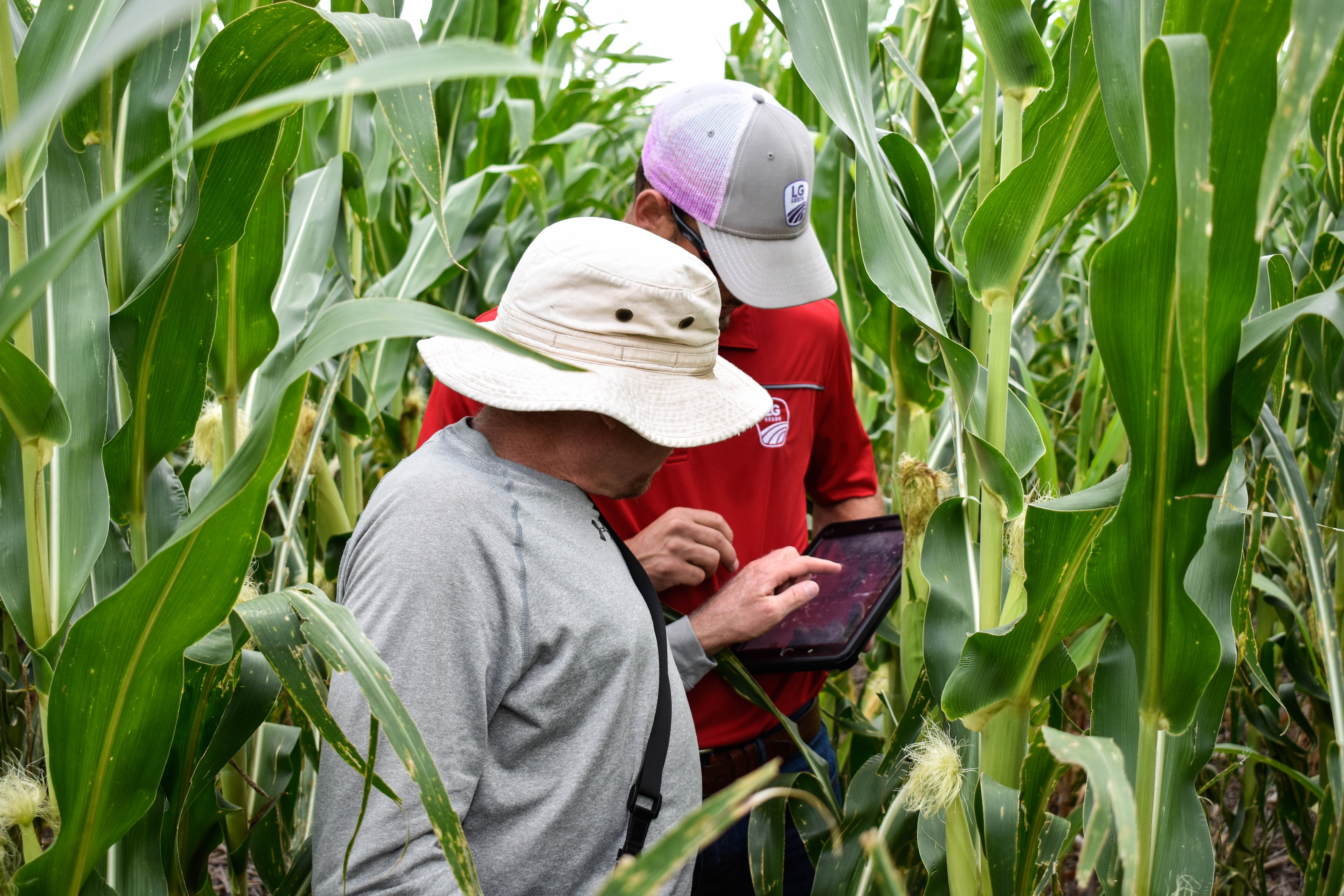AGRONOMICSUPPORT
YOU CAN TAKETO THE FIELD
Disease Protection - Now & Later
Many growers have sprayed a fungicide on their corn crop based on the presence of gray leaf spot (GLS) or another fungal disease. Typically, GLS is the primary culprit for taking away top end yields due to its impact on reducing plant photosynthesis. But other disease should also be monitored for late arrival.
If the application of fungicide was made early, at VT for example, keep in mind that many fungicides are effective for only the next 20 to 30 days, though some newer fungicides are labeled for longer protection. This brief window of protection does not provide season-long protection and a second application may be warranted if disease is present and conditions warrant.

Other diseases may be found in your corn crop such as Goss’s wilt and Stewart’s wilt. These have the potential to reduce corn yields but cannot be controlled with a fungicide because they are caused by bacterial pathogens rather than fungal pathogens. A foliar fungicide can be a good tool to help manage gray leaf spot, northern leaf blight, eyespot and tar spot. The photo to the right, courtesy of Dr. Martin Chilvers, shows darkly colored fruiting bodies from an infection of tar spot. Tar spot should be monitored and can be controlled with a timely application of fungicide. These diseases are all significant yield reducing foliar fungal diseases in the North Central U.S. and Ontario. As the inset map courtesy of Bayer Crop Science shows, the spread of many diseases, such as northern leaf blight, are still a risk to our corn crop through much of August. In 2021, southern corn rust, another notable foliar disease, has been severe in the southern states and can cause yield reductions to corn in the North Central U.S. and Ontario in certain years, but generally is not an annual occurrence.
Should You Apply Late?
Considering this year’s high yield potential and accompanying high commodity prices, a late application of fungicide may be effective if conditions warrant. Depending on the severity, Dr. Carl Bradley and others found in 2008 that when disease severity is less than 5 percent, the positive yield response to fungicide is approximately 2 bpa. Conversely, when disease severity is greater than 5 percent, the yield response to fungicide is more than 7.5 bpa. Diseases which were not present in 2008, such as tar spot, could result in higher response rates than previously identified. Tar spot can be problematic late in the growing season, so keep scouting.
Bottom line, apply a fungicide based on the presence of disease risk factors and on disease scouting observations both now and later.







Technical Agronomist